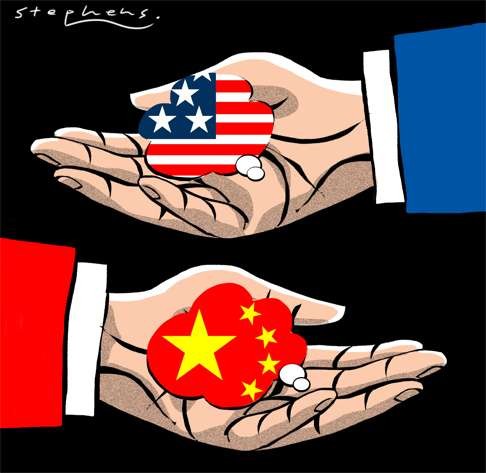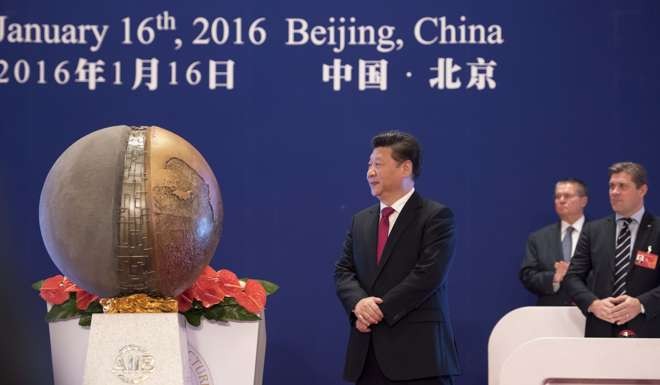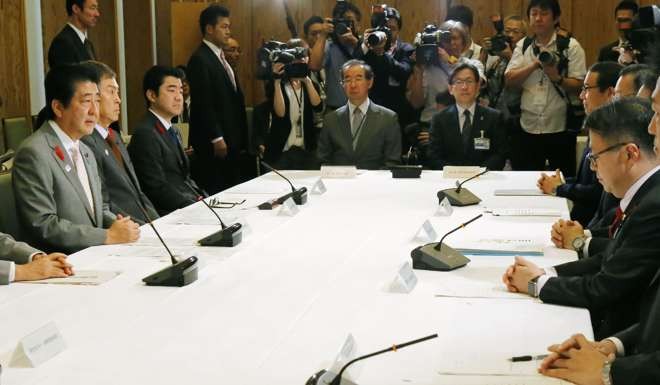
For China and the US, bound by trade, great power brings great responsibility
Patrick Mendis and Sheng Cui say the Sino-US trade partnership is the cornerstone of global peace and prosperity, and ask whether the two nations can take a lesson in wisdom from history to secure the future of humanity

The Sino-US trade relationship is the most important cornerstone of global prosperity and peace. This has been the case from the beginning of the American republic until the Opium Wars. Trade as a critical interlocutor between the two nations resumed with Deng Xiaoping’s (鄧小平) opening up and liberalisation policy, and especially after China became a member of the World Trade Organisation.
[The] Sino-American love affair began more than 230 years ago
With these and the potential success of the Belt and Road initiative and the Trans-Pacific Partnership, mutual prosperity will continue to be in focus in the future.
This Sino-American love affair began more than 230 years ago. Sailing off from New York Harbour, the Empress of China, the first merchant ship in commercial history, arrived at Canton in 1784.
It officially opened a new era of trade between the centuries-old Middle Kingdom and the nascent American republic. In the ensuing 60 years until the Opium Wars, trade between the two countries increased rapidly, making them rich and wealthy.
That golden era ended as the American civil war and the Taiping rebellion consumed the two nations with their internal tragedies, followed by the two world wars and proxy wars in Vietnam and the Korean peninsula. During the cold war, China had ideological and political conflicts with the US; thus, economic ties no longer existed until the opening up and trade liberalisation era of Deng in the 1980s. Since then, China’s economy and trade experienced an unprecedented growth, which is largely linked to the US economy.
By the end of 2015, for example, China’s foreign direct investment in the US was US$46.6 billion, while the US had US$77.5 billion in China. China has now become the largest American trade partner, overtaking Canada, after staying at second spot for a long time. Not only this economic interdependence but also the rapidly growing people-to-people exchange, particularly students and tourists, reflects the intrinsic nature of mutual prosperity.

AIIB will test China’s ability to run an international organisation
Furthering this economic growth, President Xi’s Belt and Road project, originally known as the “One Belt, One Road” initiative, underpins his trademark concept of the “Chinese Dream”, which resonates with, but differs from, the American Dream.
The Belt and Road plan aims at attracting more countries with the newly established Asian Infrastructure Development Bank (AIIB), with over 60 member states. The initiative was designed to leverage China’s historical connections, to rejuvenate the cultural and economic ties that were built through the ancient Silk Road, from the Han dynasty onward, and the Ming dynasty maritime routes.
Sino-American history has proven that commerce brings prosperity, unity, and harmony with a win-win calculus
The initiative contains the commercial DNA of the still thriving Chinese civilization. The American founding fathers, who were inspired by Chinese culture and its civilisation, seemingly understood the power of commerce to glue the young republic together, just as the succeeding dynasties continued to expand its Silk Road territory and prosperity of the Middle Kingdom.
Likewise, Alexander Hamilton, one of the American founding fathers, advocated a set of industrial and economic policies that would eventually make the young republic become a commercially sustainable nation. Thomas Jefferson, the arch-rival of Hamilton, agreed that commerce should be the protector and accelerator of the republic and suggested that: “Commerce with all nations, alliance with none, should be our motto.”
The Commerce Clause of the US Constitution has given Congress the power “to regulate commerce with foreign nations, and among the several states, and with the Indian tribes”. This solidified the function and power of commerce and bound the nation together.
Similarly, the common thread that galvanises and binds China and the US is commerce. Neither language, religion, nor ethnicity has historically been proven to be more effective for unity, stability, and prosperity than commerce.
For this reason alone, first US president George Washington counselled posterity that: “Our commercial policy should hold an equal and impartial hand.”
This evolving political culture of commercial strategy is often hindered by other factors, but Sino-American history has proven that commerce brings prosperity, unity, and harmony with a win-win calculus. The rhetoric of “great power competition” and military rivalry was not on the political agenda during the earliest era of Sino-American relationship until the Opium Wars.
Just as the Empress of China left New York Harbour for Canton on Washington’s birthday in 1784, these two dynamic regions – the Empire State and Guangdong province – are now taking the lead to revive the glory of history.

40 per cent of world’s economy signs up to TPP trade pact that Obama says ‘allows US, not China to write the rules of the road’
At present, the US is Guangdong’s second largest trade partner and New York State has set up seven joint committees for trade and investment cooperation with other Chinese provinces.
Meanwhile, Guangdong has more than US$2.1 billion of foreign direct investment in New York and US$128.4 billion of trade with the US, which accounts for close to 25 per cent of the total China-US trade.
Beijing and Washington actively maintain ... constant communication at various levels, allowing greater space for cooperation than conflict
Some may argue that China is challenging President Obama’s TPP and US leadership in the world through the Belt and Road and AIIB, but they neglect the possibility that China may eventually become a TPP member. In the meantime, China and the US are negotiating a bilateral investment treaty.
Unlike the cold war rivalry between the US and the Soviet Union, Beijing and Washington actively maintain more than 100 dialogues and constant communication at various levels, allowing greater space for cooperation than conflict.
The larger question is: how can the two great economic powers co-develop and co-evolve, and how can they bring peace and prosperity to the world through commerce?
In other words, can the American Dream and the Chinese Dream make the world a better place in terms of the human condition and poverty alleviation?
These might be the broad yet troublesome questions that US presidential candidates must address for global security and peace.
A dose of historical wisdom for a better future, as envisioned by the American founding fathers and evidenced by the ancient Silk Road, is in short demand among politicians, who are nevertheless sustained by the fruits of commerce.
Patrick Mendis, a Rajawali senior fellow at Harvard University’s John F. Kennedy School of Government, serves as a distinguished visiting professor of international politics at Zhejiang University in Hangzhou and a visiting policy fellow at Peking University. Sheng Cui, an alumnus of Peking University, is a graduate student of New York University’s Robert F. Wagner Graduate School of Public Service

